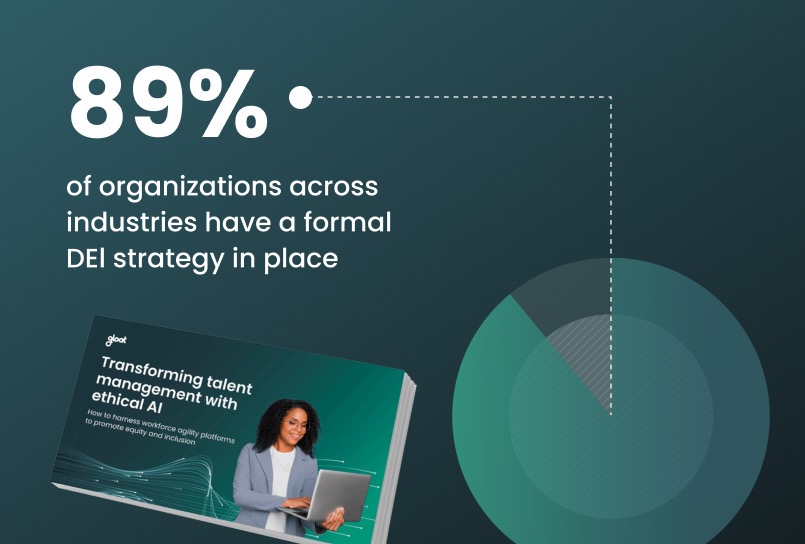AI In HR: How artificial intelligence is transforming the HR landscape
AI is transforming every element of business operations—and HR is no exception. From tools to improve talent sourcing and recruiting to systems designed to identify skill gaps before they emerge, a host of new AI innovations promise to revolutionize HR’s overarching strategy. While these tools have plenty of potential, it’s up to HR leaders to

AI is transforming every element of business operations—and HR is no exception. From tools to improve talent sourcing and recruiting to systems designed to identify skill gaps before they emerge, a host of new AI innovations promise to revolutionize HR’s overarching strategy.
While these tools have plenty of potential, it’s up to HR leaders to evaluate them, ensure they’re being used ethically, and decide what roles these systems will play in their initiatives. Rather than implementing every system at once, executives must make strategic decisions about where they’ll benefit most from these tools and prioritize implementing them in thoughtful ways to get everyone on board.
Although navigating the AI landscape may seem overwhelming at first, we’ve got a few pointers to help you take advantage of these transformational technologies.
How AI is being used in HR
AI in HR refers to the use of artificial intelligence to automate tasks like resume screening, candidate matching, and employee analytics. It improves decision-making in hiring, training, and retention by using data-driven insights, while reducing bias and enhancing efficiency across HR processes.
From recruiting to offboarding, AI-powered technology has the potential to transform every element of the employee lifecycle. Some of the most noteworthy use cases for AI in HR include:
#1. Talent sourcing
Traditionally, finding qualified candidates to move along in the hiring journey has been a tedious process. Recruiters needed to manually sift through countless resumes and LinkedIn profiles to find needle-in-a-haystack applicants with the skills and experience they were looking for. The rise of AI-powered sourcing tools promises to change that by automating many of the manual tasks associated with recruiting, such as building searches, screening applicants, and sending messages.
#2. Identifying skill gaps
As new technologies emerge and consumer demands evolve, most organizations will notice that the skills needed to execute high-priority deliverables are starting to shift. Unfortunately, many leaders only recognize these changes once it’s too late, leaving them to grapple with skills shortages. Instead of letting knowledge gaps widen, companies are harnessing skills intelligence tools to take stock of the capabilities their workforce has, the expertise that their business needs, and any discrepancies between the two.
#3. Internal mobility
Faced with growing talent shortages, leaders can no longer rely solely on external hiring to fill vacancies and solve emerging knowledge gaps. Instead, savvy executives are turning their attention inwards and creating learning and development pathways to help existing employees hone new expertise and move into new roles. Many of these internal mobility initiatives are underpinned by talent marketplaces, AI-powered platforms that match employees to open opportunities based on the knowledge they have and the skills they wish to build.
#4. Strategic workforce planning
In a world as ever-changing as ours, predicting future skill needs and reallocating and hiring talent accordingly can be exceptionally challenging. Without the right insights, leaders will struggle to make informed decisions about when they should upskill and reskill internal talent, when they can borrow employees from other functional groups, and when it’s time to prioritize hiring. Fortunately, the rise of skills intelligence tools can equip executives with the information they need to make these choices with confidence.
#5. Promoting diversity and inclusion
While most leaders are eager to level the playing field, potentially bias-inducing factors such as where employees went to school and their network often influence career growth decisions. AI-powered talent marketplaces remove these criteria from talent development choices, in turn ensuring that the employees who are chosen for promotions or lateral moves are selected based solely on their skills and abilities.
#6. Performance management
Traditionally, leaders needed to sift through a lot of data to accurately track and evaluate employees’ performance. With the rise of AI, executives can turn to new performance management tools to help them set better goals for employees, improve the feedback they receive, and identify and provide recommendations for areas of improvement. By collecting and interpreting employee performance data, these systems can also provide real-time updates and insights to managers to help them make better decisions while improving overall organizational performance.
What are the benefits of AI for HR?
There are a broad range of benefits associated with using AI for HR. Many systems can expedite various HR processes, such as sourcing tools that can build searches and screen applicants so that recruiters have more time in their days to focus on higher-level, strategic priorities. Additionally, AI-powered skills intelligence tools can help organizations tap into all the expertise their people have to offer by providing a complete view into their workforce’s capabilities.
In addition to leveling up efficiency, AI-powered tools can help businesses embrace more equitable hiring and career development processes. Talent marketplaces generate suggestions for projects and opportunities employees should pursue based solely on their skills and career goals, in turn removing potentially bias-inducing factors from the decision-making process.
Key considerations when adopting AI tools
Although AI tools offer plenty of potential advantages, there are also some challenges that HR leaders should be aware of, including:
#1. Biases and fairness
AI systems can minimize bias—as long as they’re built ethically. To pave the way for responsible usage, leaders can’t shy away from asking potential vendors important questions about the data their systems use. For example, leaders should question whether or not the AI uses demographic data (such as race and gender) to suggest matches or candidates. They should also determine how frequently the AI is monitored or audited by a neutral third party.
#2. Trust and transparency
AI-powered HR tools are a relatively new concept and some employees may need some time to adjust to these systems. That’s why it’s so important for leaders to openly update their workforces about any systems they’re introducing and explain the reasoning behind this decision and the steps their company is taking to protect employee privacy. Employees should have the opportunity to ask executives about these tools and raise any concerns they might have.
#3. Dependence and overreliance on AI
AI can streamline workflows and remove bias from decision-making processes—but that doesn’t mean leaders should become dependent on it or look to it to complete the majority of their daily tasks. Instead, it’s important to make strategic decisions about which processes can benefit from the introduction of AI-powered tools and start slowly so that leaders can continuously assess the impact these systems have.
What should HR leaders prioritize for successful AI implementation?
Implementing AI-powered systems is a complex process. To make their organization’s rollout as seamless as possible, HR leaders should ensure they’ve gained stakeholder support for their forthcoming system by demonstrating how it will help leaders across their organization with various business use cases. They should also establish champions and advocates amongst company leadership to help encourage employee adoption and drive benefits across the company.
Beyond gaining leadership support, HR must collaborate with internal communications to get the word out about their new tool. Employees should be equipped with a variety of resources that explain how the system will be used, the ways they can benefit from it, and the steps the organization is taking to ensure their AI usage is responsible.
What does the future of AI in HR look like?
While it’s impossible to predict exactly how AI will revolutionize HR in the years to come, leaders can feel confident that these systems will only continue to become more popular. Rather than replacing workers, AI will be used to complement the tasks that employees are responsible for, paving the way for a future hallmarked by strategic collaborations between humans and machines.
To learn more about these systems and how to use them responsibly, download our guide, Transforming talent management with ethical AI.





